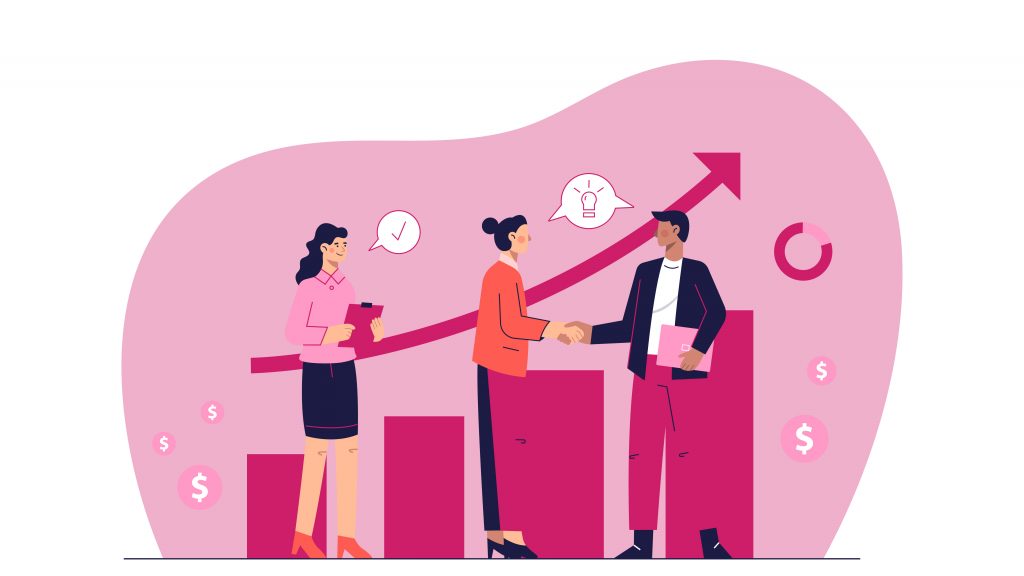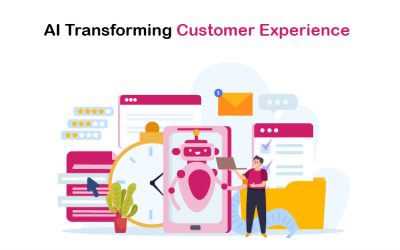Biggest Challenges in Customer Experience and How to Solve Them

“In a world where products and services are becoming more and more commoditized, customer experience is the only true differentiator.”- Annette Franz
Customer experience emphasizes every aspect of a company’s offering. Be it the quality of customer care, ease of use of products or services, or reliability of their features. It is defined as how the customer perceives their interaction with a company.
Improving the customer experience necessitates considerable work. There are significant drawbacks for businesses that do not take customer experience seriously. Here are the top five customer experience difficulties that businesses may address in developing a world-class customer experience program
1. Unpredictable Customer Experiences
According to market experts, firms that are not internally united on understanding and achieving customer expectations risk producing “inconsistent brand experiences” across the customer journey.
Unpredictable difficulties frequently arise as a result of quality flaws, misunderstandings, or operational failure. Unanticipated challenges emerge no matter how wonderful an organization is. Dealing with unpredictability in customer experience comes down to a single factor: staff empowerment. When you empower your employees to deal with the situation in whatever manner they can, you increase both your customers’ experience with your brand and your employees’ pleasure by being able to swiftly resolve the issue.
2. Customer Churn
“Focusing on the customer makes a company more resilient.”- Jeff Bezos

Organizations without a true customer experience program are unable to pay full attention to or deliver customized experiences for one‘s customers. As a result, companies are more likely to struggle in the medium to long term with providing seamless experiences and keeping consumers.
Read the success factors you need to focus on for customer experience success.
3. Employee Disengagement
One of the most significant truths to learn about customer and employee experiences is that they are inextricably related. As stated in Experience 21, businesses that top the market in CX have 1.5 times more engaged workers than those with less pleasant customer experiences.

Employees desire to work with successful companies. And one excellent approach to do so is to understand and measure customer satisfaction using NPS and total customer happiness. Connecting these essential measures to the job that employees undertake on a daily basis aids individuals in comprehending why they arrive at work each day. Brands that lack a comprehensive view of both staff and user experience data potentially get at risk of poor customer results.
4. Low Consumer Trust
Customer loyalty can be crucial for the success of your organization. It’s more difficult to persuade customers to believe in your business when you’re not attentive to their requirements.
When it comes to trusting a brand, consumers are most concerned about three factors:
- Product knowledge
- Customer Experience
- Social influence of a brand
Trust can assist customers in moving across the entire business funnel, from recognition to sales, but also support and commitment. In other terms, developing trust may assist a brand in developing a long-term connection with its customers.
Read more for the best strategies to develop and ensure customer loyalty.
5. Siloed Views of the Customer Experience
Customer experience silos are undermining your friendly personnel, connections, and layouts. Seamless CX necessitate the elimination of silos throughout the customer journey.
Rushing to finish up a conversation in a specific period, for example, might lead to an unhappy customer experience; with the team focused on a KPI like speed rather than properly resolving a given issue. Prioritizing the incorrect KPI might also affect not just the customer experience, but also the company’s income.
One example of how you may enhance the experience of the customer is by introducing a cross-functional, omnichannel customer experience program that is intended to optimize CX throughout the entire journey. In order to break down CX silos and unify customer experience priorities across important departments like operations, the contact centre, and marketing, the organization can put this into practice.
How can you solve these Customer Experience Challenges?
Once you’ve identified the customer’s challenges, the next step is to work with them to avoid difficulties and gain their support. Here are some strategies for dealing with uncertain consumers.
• Listen to Your Customer’s Needs
Pay attention to what your consumer has to say. Regardless of the amount of stress you are under, you must keep a clear conversation with your consumer. This might be a challenging task at times since customers may have difficulties expressing their true desires.
Channels of communication including forums, surveys, demos, etc. are effective, but be prepared to hear feedback. Focus on what is being told, recognize what you hear, ask clarifying questions, and double-check for correctness.
When you listen to your cutomers, make sure to follow these Do’s and Don’ts.
• Understand the Customer’s Environment
Improve your understanding of the customer’s environment. Learn the vocabulary, roles and duties, the influence of their operations, and the benefits the project delivers to their business.
Understanding the many difficulties associated with the customer’s environment can assist project managers in dealing with interactions and influencing the company.
Develop a thorough grasp of all potential internal and external project drivers that will assist the project manager in putting the project management process together. Take note of what your consumer is going through.
• Communicate Your Project Value
Cooperation without dedication is insufficient. Your customer needs to understand the benefit in order to commit. Create a cost-benefit analysis, identify the areas where the system may be improved, and share your findings with the customer. Constructing the crucial link between the system and the operational procedures.
Connect project values to the current goal and vision of the company. Look for problems that prioritize speed to market, minimize rework, and are adaptable. Understanding customers may assist in assessing risks and offering options for risk reduction.
• Engage Your Customer in Value-Added Activities.
Engage your customer in actions that will improve the overall quality of CX. For instance, ask your customer to assist in training the new system. Others will be more likely to adopt a new system because of their business experience and dedication to change than because of the mere pressure of growing technology.
Even if you employ the most cutting-edge technology, if the customer does not believe in it, they will not use the system.
• Make the Customer the Owner of the Delivered System
Before performing any operational tasks, it is important to consider who will be the platform’s ultimate owner. It is seen frequently that the customer is left with the system once a new service is launched. The team moves on to another project and the team disbands.
Getting started with optimizing customer experience at your company
Do you work for a company that doesn’t currently have a special program focused on the customer experience? Or have you started a program for improving the customer experience, but you still need to put the necessary people, practices, systems, and technology in place?
You’re not the only one, no matter where you are in your managing CX journey. Every customer experience team must begin somewhere, and management tools and best practices also change as consumer expectations do.
To enhance the CX , there is always room to improve. By using a good Customer Experience management platform, you can gather customer feedback, manage marketing campaigns, find sales opportunities, track service issues, and keep contact details for your customers and opportunities all in one location. You can also make information about every customer interaction accessible to anyone in your organization who needs it.
Click Here to request a free demo.
Recent Posts
- How People Analytics Can Utilize Data to Drive Business Results
- The Role of AI in Enhancing Employee Feedback Systems
- How Purpose-Built AI Can Help You Build A Great Customer Experience
- Why is Customer Sentiment Analysis Crucial to Your Business?
- Customer Experience Statistics You Need To Know for 2025 | CX Statistics 2024



